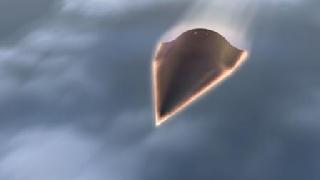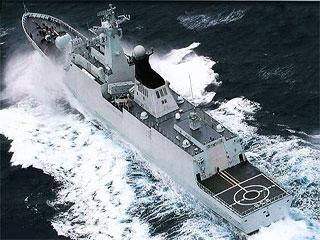
Falcon HTV 2. A DARPA photo.
WASHINGTON (BNS): DARPA will carry out the second flight test of the Falcon Hypersonic Technology Vehicle 2 on Thursday from Vandenberg AFB, California, aboard an Air Force Minotaur IV rocket.
The launch which was earlier scheduled for Wednesday was scrubbed due to weather, DARPA said.
Falcon HTV-2 is an unmanned aircraft that can fly at 13,000 miles per hour-a speed at which it would take less than 12 minutes to get from New York to Los Angeles.
The aircraft can withstand temperatures in excess of 3,500 degrees Fahrenheit and it also has the ability to send a missile to an identified target within an hour.
HTV-2 first test-flight in April of 2010 ended in failure when it crashed into the ocean just nine minutes after takeoff.
During its second test flight, “DARPA looks forward to conquering more unknowns about long-duration hypersonic missions. We need to increase our technical knowledge to support future hypersonic technology development,” Dave Neyland, director of DARPA’s Tactical Technology Office said in a statement.
“We gained valuable data from the first flight, made some adjustments based on the findings of an engineering review board to improve this second flight, and now we’re ready to put all of that to the test.”
For Thursday’s test flight, engineers adjusted the vehicle’s centre of gravity, decreased the angle of attack flown, and will use the onboard reaction control system to augment the vehicle flaps to maintain stability during flight operations.
A technology demonstration and data-gathering platform, the HTV-2 is packaged in a special capsule atop the launch-ready Minotaur IV Lite rocket.
After the Minotaur rocket launches and nears orbit, HTV-2 will separate and fly at a hypersonic glide trajectory within the earth’s atmosphere Mach 20 speeds, approximately 13,000 miles per hour.
More than 20 land, air, sea and space test assets will collect data needed to improve predictions, through modeling and simulation, of future hypersonic flight vehicle performance, it said.
 Previous Article
Previous Article Next Article
Next Article












The Indian Air Force, in its flight trials evaluation report submitted before the Defence Ministry l..
view articleAn insight into the Medium Multi-Role Combat Aircraft competition...
view articleSky enthusiasts can now spot the International Space Station (ISS) commanded by Indian-American astr..
view article